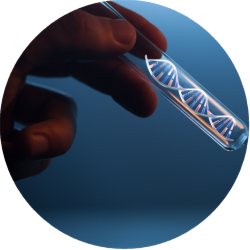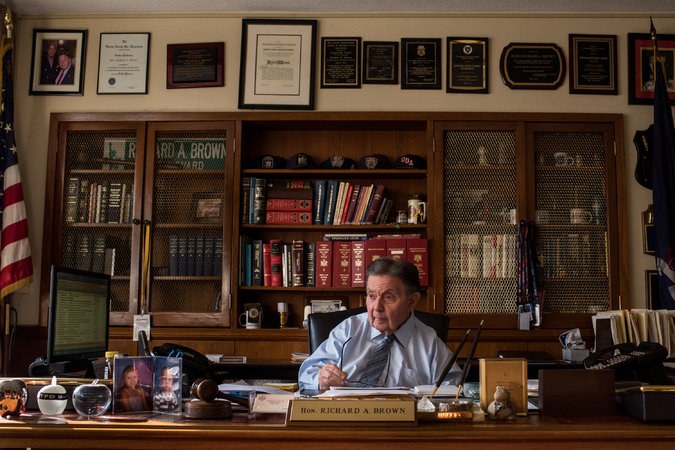 The leads have dried up in the killing of a young woman in Queens during a jog last summer.
The leads have dried up in the killing of a young woman in Queens during a jog last summer.
Tips about potential suspects have gone nowhere. A reward has failed to bear fruit, even as it has swelled to over $280,000. And the samples of a stranger’s DNA found on the hands, throat and cellphone of the victim, did not match those in national offender databases...
But the authorities say that the recovered DNA from the victim, Karina Vetrano, 30, could hold the key to solving the case if state officials authorize what is called familial searching, which allows investigators to search criminal databases to identify likely relatives of the offender.
The technique, which has been used more than a dozen times in the United States over the last 10 years, represents a frontier in the evolving world of forensic science. While some methods, like microscopic hair testing and bite-mark matching, have been challenged in recent years, DNA testing remains a staple of forensic investigation, used to both identify suspects and exonerate the wrongfully convicted.
Familial searching allows investigators to search offender databases with wider parameters to identify people who are likely to be close relatives of the person who may have committed a crime. Law enforcement officials say a hit in the database is less a piece of evidence than it is a lead, and such matches have helped solve some heinous crimes in states where the practice has been authorized.
 Philip Vetrano on the path in Queens where his daughter Karina was jogging when she was killed last year.
Philip Vetrano on the path in Queens where his daughter Karina was jogging when she was killed last year.
Mr. Vetrano has urged the use of familial DNA searches. Credit Sam Hodgson for The New York Times
But the method raises some complicated ethical issues that have trailed the expansion of DNA technology since its introduction. And as the collection of DNA grows in the private sector, so do the concerns about its potential misuse, particularly in the hands of government institutions.
Problems at some laboratories, including the New York City medical examiner’s office, have highlighted how DNA evidence is not immune from human error. A 2013 review of more than 800 rape cases processed by the medical examiner’s office found that DNA evidence was mishandled in dozens of cases.
 Richard A. Brown, the Queens district attorney, supports the use of family DNA searches.
Richard A. Brown, the Queens district attorney, supports the use of family DNA searches.
But experts say the constitutional implications have yet to be tested in court. Credit Hilary Swift for The New York Times
In the case of Ms. Vetrano, who the police say was sexually assaulted and strangled, lack of progress led Richard A. Brown, the Queens district attorney, to push for familial searching.
“The Police Department reached a point where they exhausted all their leads. And they came to us and said in essence, ‘What else can we possibly do?’” Mr. Brown said in an interview.
Mr. Brown and two of his deputies, Eric Rosenbaum and Robert J. Masters, said that Ms. Vetrano’s case presented an ideal situation for using familial searching, in part because of what they say is the high likelihood that the DNA is from the perpetrator.
“It is a stranger rape case,” Mr. Masters said. “In the annals of law enforcement, there are few fact patterns that are more frightening.”
The New York State Commission on Forensic Science, a 14-member panel appointed by the governor to develop standards for forensic laboratories, and its seven-member DNA subcommittee will hold a meeting next month on whether to authorize the technique.
Familial DNA searching was pioneered in Britain, helping in 2002 in what was believed to be the first conviction using the technique. In 2008, California became the first state in the country to authorize the testing, and Colorado followed a year later. It has now been used in at least eight other states.
California has solved seven cases using familial searching, a spokeswoman for the state’s Justice Department said. One was the so-called Grim Sleeper case in Los Angeles. A serial killer preyed on vulnerable women and eluded identification for decades until investigators matched crime scene DNA to the killer’s son, whose DNA was in an offender database.
“You’ve got a serial murderer or rapist in your community — you sit on your hands and wait for him to get in your database or do you try something?” said Mitchell R. Morrissey, an early proponent of the testing and a former district attorney in Denver.
In New York, efforts to authorize such testing through the Legislature went nowhere several years ago. A compromise that allowed the authorities to use partial DNA matches automatically generated in the course of routine investigations has proved ineffective.
But Ms. Vetrano’s case — along with the public pleas of her father, Philip, and his behind-the-scenes work with the Police Department and elected officials — has re-energized the push for familial searching.
Critics of the technique say that regardless of its potential for success, it expands the use of DNA databases beyond their original intent. They fault it for allowing for searches of people who happen to be related to someone who has committed a crime, and say that given the composition of the offender databases, familial searching disproportionately affects blacks and Hispanics.
“You’re creating a database of suspects largely defined by their race and class,” said Stephen Mercer, the chief attorney of the forensics division of the public defender’s office in Maryland, which outlawed the technique in 2008 in the face of these concerns. “That is just so fundamentally against our core values.”
The District of Columbia has also prohibited these searches.
Leads provided by familial DNA have resulted in errors. A filmmaker in New Orleans was told that he was a suspect in a murder in Idaho based on a DNA sample given by his father years earlier as part of a church-sponsored genealogy project. Ancestry.com, which had purchased the database from a nonprofit that had collected the DNA, was required by a court order to identify the man to the police.
The man was cleared after his DNA — which he gave under a court order — was tested.
Since then, Ancestry.com has made the database private and has not received any other requests from law enforcement officials for health or genetic information about an Ancestry member, a spokesman for the company said. The spokesman, Brandon Borrman, said the company would comply with such a request only if legally required.
Courtesy of NYT




